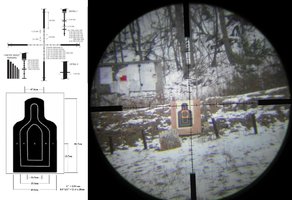dcmdon
NES Member
So, I"m starting to put together some wants and requirements for my next scope. My goal is to get reasonably proficient shooting at long ranges.
I'm already reasonably proficient shooting out to 200 yards. I've got a handle on the fundamentals, NPOA, breathing, sight alignment/picture, trigger squeeze and follow through.
What I am not proficient at is judging bullet drop at distances where this is a factor or judging wind drift. I've already got a decent rifle for this, an AR10 style rifle with a Lilja barrel that shot less than 1 moa for me on my first stab at reloading for it, using a 4x scope. The gun is definitely not the weak link. I am.
So I'm looking for a scope. I know that I want the turrets and the reticle to be in the same unit. Either both in MOA or both in Mils. The question is which should I choose and why?
My thoughts are that my mind already works in MOA, I've been doing those calculations in my head for years. And with the right understanding you can figure ranges as well with a MOA reticle as with a Mil dot reticle.
But Mil based long distance reticles seem to be more common.
Thoughts?
I'm already reasonably proficient shooting out to 200 yards. I've got a handle on the fundamentals, NPOA, breathing, sight alignment/picture, trigger squeeze and follow through.
What I am not proficient at is judging bullet drop at distances where this is a factor or judging wind drift. I've already got a decent rifle for this, an AR10 style rifle with a Lilja barrel that shot less than 1 moa for me on my first stab at reloading for it, using a 4x scope. The gun is definitely not the weak link. I am.
So I'm looking for a scope. I know that I want the turrets and the reticle to be in the same unit. Either both in MOA or both in Mils. The question is which should I choose and why?
My thoughts are that my mind already works in MOA, I've been doing those calculations in my head for years. And with the right understanding you can figure ranges as well with a MOA reticle as with a Mil dot reticle.
But Mil based long distance reticles seem to be more common.
Thoughts?

